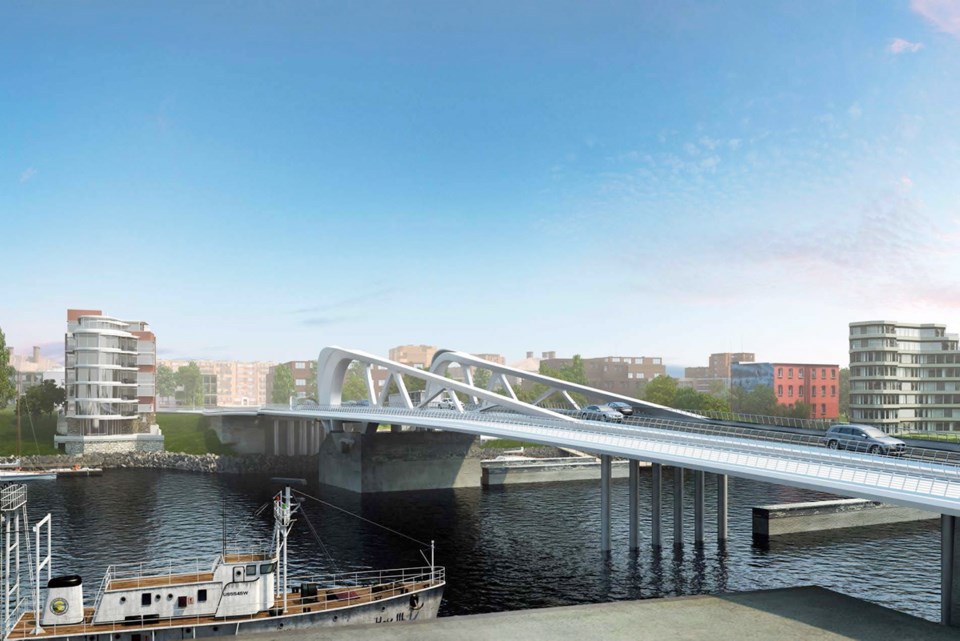An official from Seaspan Marine is expressing “serious concern” about the proposed speeds for barge traffic under the new Johnson Street Bridge, saying they could pose added risk.
Paul Hilder, vice-president of marine operations, shared the company’s concerns in a letter to the City of Victoria’s engineering department.
He said a proposal to limit speeds to 3.5 knots for loaded barges and 4.5 knots for empty barges does not account for the discretion of experienced tugboat masters “to transit at variable speed required to safely control the tow.”
The decision to leave old bridge abutments in place will mean vessels have to travel farther and could also create risk, he said.
“This doubling of the transit distance in combination with the speed limits proposed undermines safety, rather than enhances it,” Hilder said.
Seaspan Marine operates a fleet of barges and provides such services as escorting ships. Its Victoria offices are on Dallas Road.
If no changes are made, the company “will have to curtail barge service to businesses above the bridge and cease performing bridge assists to other operators,” Hilder said.
Seaspan Marine president Bart Reynolds said the company has asked the city to reconsider seeking a reduced speed limit from Transport Canada and the harbourmaster.
“We look forward to working with the City of Victoria and Transport Canada to come to a solution that satisfies the needs and safety standards of all parties involved,” Reynolds said.
Jonathan Huggett, director of the bridge project, said that Seaspan, Transport Canada and the Greater Victoria Harbour Authority have all been consulted.
“We have conducted vessel-movement simulations at the Pacific Maritime Institute with key stakeholders, including Seaspan,” Huggett said in a statement. “The city is working with its technical experts to ensure the bridge has an appropriate fendering system and operating procedures, which includes type and configuration of tug boats, speeds and other requirements.
“These will be presented to council for approval in the spring. We will continue to work with all parties to ensure the bridge is safe.”
The bridge is scheduled to open to vehicles by Dec. 31, with the project due for completion in March 2018 at a final cost of $105 million. At the time the bridge project was approved in 2009, it had an estimated cost of $63 million and a completion date of Sept. 30, 2015.



